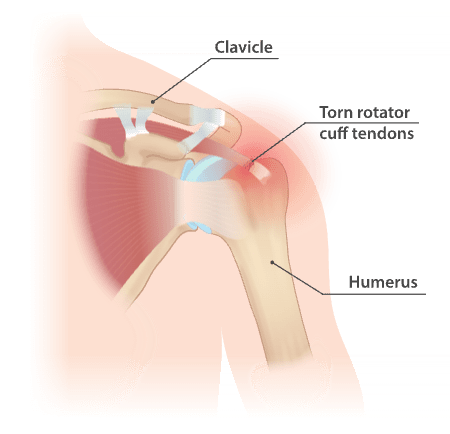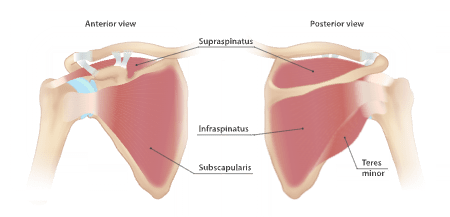
HOW TO PREVENT AND TREAT ROTATOR CUFF INJURY
We don't even have to ask - we know that even if you haven't treated a patient with the problem, you have at least heard or read how to prevent and treat rotator cuff injuries. They are so common and affect so many patients that it is practically impossible not to talk about them. Therefore, we have prepared this article to help you understand how to treat rotator cuff injury.
What is the rotator cuff?
The rotator cuff is a set of four tendons that surround the shoulder. These tendons help keep the shoulder in place and contribute to joint movement, each of which moves the shoulder in a different way. The injury is characterized by rupture of the fibres of one or more rotator cuff tendons.

The injuries are quite different from each other because:
- They can be partial or complete;
- They can affect only one tendon or an association of them;
- The tendon may remain in its original place, or it may retract;
- The tendon and the muscle that makes up the tendon may be normal or worn out;
- They can be isolated or associated with other shoulder problems.
Each rotator cuff tendon is forced into a certain movement. Thus, identifying the specific activity causing the pain will help the doctor to determine which tendon is most likely to be affected by the injury.

Symptoms vary according to the characteristics of the lesion. Still, they should draw attention to a rotator cuff tear:
- Pain in the shoulder and arm region, which may radiate to the neck or scapula;
- More intense pain at night, when lying down or during sleep, often waking the patient up;
- Difficulty lifting or carrying objects (loss of strength);
- Difficulty moving the shoulder, especially when raising the arm above the head;
- Pain relief is more effective with warm compresses than with regular pain relievers.
How to treat rotator cuff injury?
There are two ways to treat rotator cuff injuries, surgically and without surgery. The treatment is chosen depending on some factors of the injury as well as the patient. Here is a list of the basic characteristics:
- Patient’s age;
- Patient’s physical requirements;
- Other illnesses like blood pressure, diabetes, and heart problems;
- The severity of the injury
- Pain intensity
- Type of rotator cuff
- Muscle degeneration intensity
Prevention of rotator cuff injury
Individuals who want to prevent rotator cuff injuries need to work with specific exercises to stabilize the shoulder. It is important that this joint complex has strong muscles and adequate physiological functioning to allow movements at maximum range and support a greater load. Any injury prevention work, especially with athletes, needs to strengthen the cuff muscles.
Our last tip for achieving effective rotator cuff injury prevention is: be careful with the load. The elastic band is a good option to avoid overloading and impacting the shoulder joints, but it is still important to start with low loads and progress slowly. We hope that this article helps you and you now have basic knowledge on how to prevent and treat rotator cuff injury. Stay safe!
About the Author

Qurat Shahzad
Qurat-ul-Ain is a dedicated writer who likes to write anything and everything.



